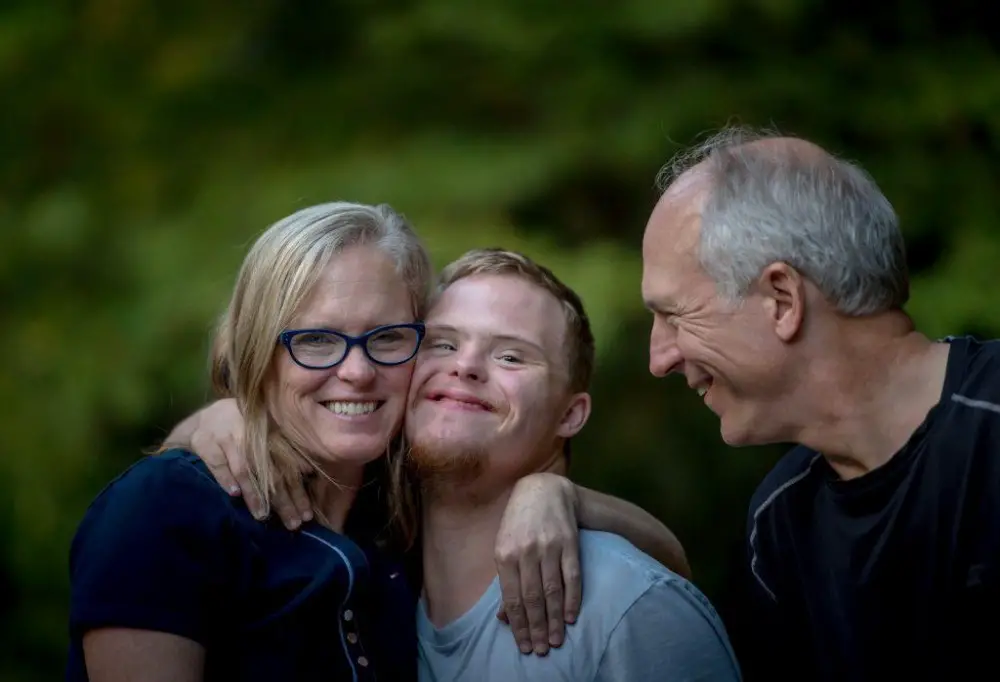Down syndrome is a chromosomal condition characterized by the presence of an extra copy of genetic material on chromosome 21, either in whole (trisomy 21) or in part (such as due to translocations). This disease is diagnosed in two ways, during pregnancy or shortly after birth.
When held, a newborn with Down syndrome feels like a rag doll. It is more difficult to master gross motor skills due to low muscle tone, coupled with decreased strength and endurance.
Pro, people with Down syndrome are not stronger? This belief has been established for years, although it is not really scientifically proven. People with this disease have low muscle tone, and this makes them sensitive to stimuli and immune to others.
We must also take into account their hypotonia, which is the condition that makes them “softer”. In short, they have a low muscle tone, although they are still powerful in many aspects.
Effects on the musculoskeletal system
This disease not only affects the mental development of people, but also has a great impact on the health of muscles and bones.
reduced muscle strength
Bone mass and bone geometry are influenced by muscle growth and development in children and adolescents. This process is further modified by hormonal signals. Motor function in people with Down syndrome is characterized by hypotonia and hyperflexibility , resulting in an increased risk of joint dislocation and delayed motor skills.
Hypotonia, decreased muscle tone, has a negative effect on the proprioceptive feedback of the sensory structures of the muscles and joints and can have a detrimental effect on the efficiency of joint contractions and postural reactions.
People with Down syndrome have hyperflexibility, more joint mobility than average. Increased joint mobility can contribute to poor posture control. Along with co-contraction failure, it can have a negative impact on joint stability. This joint laxity is found in various parts of the body due to abnormal collagen found in Down syndrome.
Vitamin D deficiency
There is a detrimental effect of vitamin D insufficiency on musculoskeletal health in children and adolescents during the critical period of bone mass accumulation. Vitamin D is not only essential for the normal growth of children, but also for the maintenance of bones. Vitamin D is also important for other functions such as muscle tone, immune defense, and even cancer.
This vitamin, orally absorbed through food or created under the influence of sunlight, is a precursor of the hormone 1,25-dihydroxyvitamin D. The latter stimulates calcium absorption in the small intestine and renal reabsorption and thus ensures better bone health.
In people with Down syndrome, risk factors, such as inadequate sun exposure, inadequate vitamin D intake, and malabsorption or increased breakdown of vitamin D that accompanies anticonvulsant therapy, contribute to insufficiency. of vitamin D. Patients with Down syndrome often have osteoporosis and fractures as a result of this deficiency.
low bone mass
The accumulation of bone mass during childhood is a key determinant of bone health in adulthood, and low maximum skeletal mass is considered a major risk factor for osteoporosis in adult life.
Multivariate analysis showed that Down syndrome was associated with low spinal bone mineral density . Lack of physical exercise, low muscle strength, insufficient sun exposure, low vitamin D levels, and long-term use of anticonvulsants are additional risk factors for low bone mineral density.
Some experts hypothesize that the extra copy of chromosome 21 might be responsible for the short stature, skeletal abnormalities, and premature aging seen in Down syndrome patients.

walking problems
Children with Down syndrome typically learn to walk with their feet wide apart, knees stiff, and feet turned out . They do this because hypotonia, ligamentous laxity, and weakness make their legs less stable.
Physiotherapy should begin by teaching the child with Down syndrome proper standing posture when he is still very young. So it will help to place your feet below your hips and pointing forward with a slight bend in your knees. With proper physical therapy, gait problems can be minimized or avoided.
posture and balance
Children with Down syndrome often learn to sit with a posterior pelvic tilt, a rounded trunk, and their head resting on their shoulders . Physiotherapy should teach the child proper sitting posture by providing support at the appropriate level even before the child can sit independently. Proper physical therapy can minimize problems with trunk posture.
It is common for children with Down syndrome to be late in reaching common milestones, such as sitting independently, standing, and walking. One of the contributing factors to delaying these specific milestones is poor balance . People with Down syndrome are often considered lazy, clumsy, uncoordinated, and have strange movement patterns due to balance problems. Many of these characteristics are maintained until they are adults.
Benefits of physiotherapy
Without physical therapy, a child with Down syndrome could end up having postural, gait, and orthopedic problems later in life due to improper use of their muscles. They are also at a higher risk of joint problems if the muscles are not strengthened. So early intervention is important.
Physical therapy at an early age strengthens muscles, which enables children with Down syndrome to keep their bodies in proper alignment and prevent future health problems.
Exercise can help people with Down syndrome improve muscle strength. But the exercises need to be the right kind, executed properly, and with enough repetition. In addition, the exercises should be fun, and the participation of siblings and friends is an essential part of improving participation levels. A person with Down syndrome may benefit from exercise programs that include other family members. However, they may have difficulty integrating exercise into their daily routine.